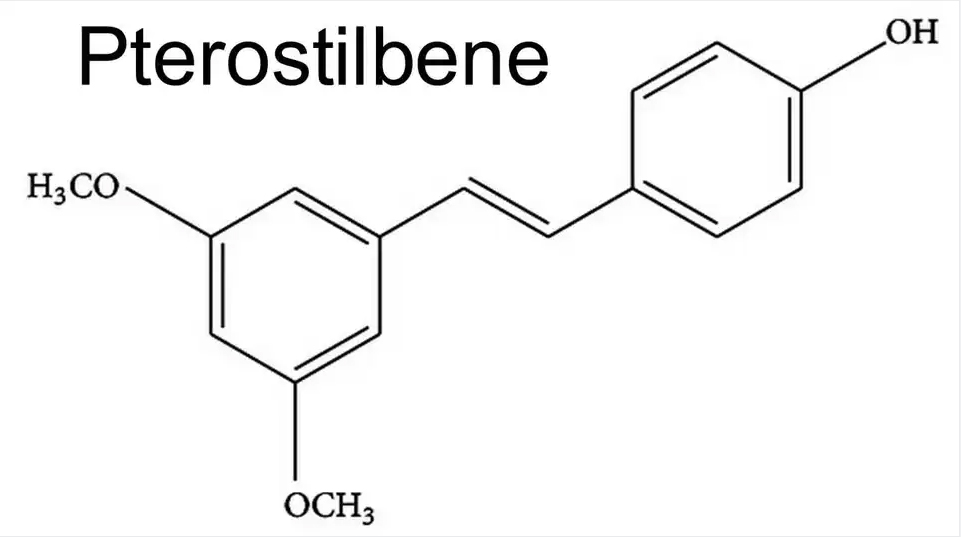Pterostilbene is a natural compound that is chemically related to resveratrol, a compound found in red grapes and red wine. Pterostilbene is primarily obtained from various plant sources, including:
Blueberries: Blueberries are a well-known source of pterostilbene. This compound is found in significant amounts in blueberries, which are commonly consumed for their potential health benefits.
Pterocarpus marsupium: Pterostilbene can also be extracted from the heartwood of the Indian Kino tree, scientifically known as Pterocarpus marsupium. This tree is native to India and has been used in traditional medicine.
Certain other plants: Pterostilbene can be found in trace amounts in other plants, such as grapes and peanuts, but it is not as abundant in these sources as it is in blueberries.
Pterostilbene is often studied for its potential health benefits, particularly its antioxidant and anti-inflammatory properties. It is available as a dietary supplement and is marketed for various health purposes, similar to resveratrol.
Chemical structure and physical properties of Pterostilbene
Pterostilbene is a natural stilbenoid compound that is chemically similar to resveratrol, which is found in grapes and other plants. It is often found in blueberries and has been the subject of research due to its potential health benefits. Here is some information about the chemical structure and physical properties of pterostilbene:
Chemical Structure of Pterostilbene:
Pterostilbene has the following chemical structure:
Physical Properties of Pterostilbene:

Physical State: Pterostilbene is a crystalline solid at room temperature.
Molecular Weight: The molecular weight of pterostilbene is approximately 256.3 g/mol.
Melting Point: Pterostilbene has a relatively high melting point, which is around 89-92 degrees Celsius (192-198 degrees Fahrenheit).
Solubility: Pterostilbene is sparingly soluble in water but more soluble in organic solvents like ethanol and dimethyl sulfoxide (DMSO).
Color: It is often described as a white or off-white crystalline powder.
Odor and Taste: Pterostilbene is typically odorless and tasteless.
Stability: Pterostilbene is relatively stable under normal conditions, but like many natural compounds, it can degrade when exposed to heat, light, or air.
Pterostilbene is known for its potential health benefits, including antioxidant and anti-inflammatory properties. It has been studied for its potential role in various health conditions, including cardiovascular health, cognitive function, and as a potential anti-cancer agent. However, it’s important to note that while pterostilbene shows promise, more research is needed to fully understand its mechanisms and efficacy in various applications.
